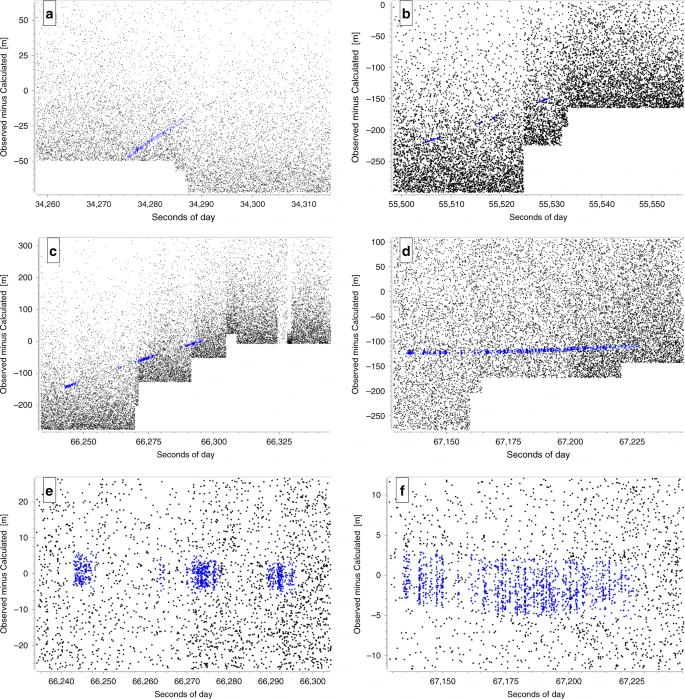Phys.org August 4, 2020
Utilizing a higher-powered laser, space debris laser ranging detects diffuse reflections from defunct satellites or rocket bodies up to 3000 km. So far space debris laser ranging was only possible within a few hours around twilight while it is dark at the satellite laser ranging station and space debris is illuminated by the sun. An international team of researchers (Austria, Spain, Germany) has extended the visible window using a combination of a telescopic detector and filter to increase the contrast of objects as they appear against the sky during the day. Overall, the new technique could increase observation times of space junk from Earth from six to 22 hours a day. This could significantly contribute to improving orbital predictions in case of (collision) warnings or for future space debris removal issions…read more. Open Access TECHNICAL ARTICLE

Daylight space debris laser ranging results. Credit: Nature Communications volume 11, Article number: 3735 (2020)